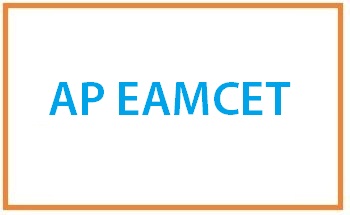AP EAMCET exam pattern: candidates aspiring for admission into Engineering, Agriculture and Pharmacy programs through AP EAMCET exam should know the exam pattern for the same. Knowing the AP EAMCET exam pattern will enable the candidates to utilize their time efficiently for the preparation.
AP EAMCET exam pattern illustrates the overall structure in which the question paper will be framed. It is important to have an idea of the exam before appearing for it. Through this article, candidates will find all the necessary information on the AP EAMCET exam pattern in a comprehensive way. Candidates are encouraged to read the entire article for detailed info.
AP EAMCET Exam Pattern
| Exam Mode | Online (CBT: Computer based Test) |
| Language | English and either Telugu or Urdu |
| Exam Duration | Three Hours |
| Subjects | For Engineering: Physics, Chemistry and Mathematics
For Agriculture: Physics, Chemistry, Botany and Zoology |
| Types of Questions | Multiple Choice Questions (MCQs) |
| Total Number of Questions | 160 |
| Marking Scheme | Every right response will fetch +1 mark |
| Negative Marking | Not Applicable |
| Subjects | Total No. of Questions | Total Marks |
| For Engineering | ||
| Physics | 40 | 40 X 1 |
| Chemistry | 40 | 40 X 1 |
| Mathematics | 80 | 80 X 1 |
| Grand total | 160 | 160 |
| For Agriculture | ||
| Botany | 40 | 40 X 1 |
| Zoology | 40 | 40 X 1 |
| Chemistry | 40 | 40 X 1 |
| Physics | 40 | 40 X 1 |
| Grand total | 160 | 160 |
Important Instructions on Computer-based Test (CBT)
- Candidates can make themselves familiar with the CBT exam through a sample/mock test available on the official website.
- Only one answer will be correct in the MCQ questions. Every question will have 4 options to choose the correct answer from.
- All the questions will carry equal weightage.
- Candidates will be provided a rough sheet in the examination. Hence, they don’t need to bring any paper/sheet for the same purpose.
- Candidates must arrive at the exam centre with the hall ticket, a valid ID proof and one photograph. The same might be checked by the invigilator during the examination.
- Entry to the exam hall will be denied to the candidate who doesn’t possess the above mentioned documents.
- Any kind of electronic items/equipments like calculator, pager, mobile phones, smart watches as well as the study material will not be permitted in the exam hall.
Minimum Qualifying Marks
- 75% of EAMCET normalized marks and 25% of Intermediate Marks in group subjects will be given weightage to prepare the rank.
- There will be no minimum marks criteria for candidates belonging to the SC/ST communities.
- The admission of the candidates belong to the reserved category will be limited to the seats reserved for them.
- In case the reserved category candidates got marks in all three subjects as zero after normalization, then the rank will be given based on 25% marks in 10+2.
What is Normalization?
Normalization is a process that ensures that candidates neither get an advantage nor disadvantage because of the difficulty of questions asked in the examinations conducted in multiple sessions. In the normalization process, the marks of the easier session may be reduced marginally and the marks of the harder paper may increase marginally on the global level, depending on the average performance in each session.
Normalized Marks of the candidate
= GM S + (Top average global- GMS)/ (Top average session-SMS) X (Marks obtained by a candidate- SMS)
SMS :( Average + Standard Deviation) of the session in which the candidate belongs to
GMS: (Average + Standard Deviation) of all the candidates across all sessions together
Top Average Session: Average marks of the top 0.1% of the candidates in the session in which the candidate belongs to.
Top Average Global: Average marks of the top 0.1% of all the candidates across all sessions together.
AP EAMCET Syllabus at a glance
Here is the important highlights of AP EAMCET syllabus:
Physics: Units and Measurements, Motion in a Plane, Motion in a Straight Line, Laws of Motion, Work, Power and Energy, Systems of Particles and Rotational Motion, Oscillations, Gravitation, Mechanical Properties of Solids, Wave Optics, Electric Charges and Fluids, Mechanical Properties of Fluids, Thermal Properties of Matter, Thermodynamics, Kinetic Theory, Waves , Ray Optics and Optical Instruments, Electrostatic Potential and Capacitance, Current Electricity, Moving Charges and Magnetism , Magnetism and Matter, Electromagnetic Induction, Alternating Current, Electromagnetic Waves , Dual Nature of radiation and Matter, Atoms, Nuclei, Semiconductor, Communication System.
Chemistry: States of Matter: Gases and Liquids, Surface Chemistry, Chemical equilibrium and Acids-Bases, Stoichiometry, Thermodynamics, General Principles and Metallurgy, Environmental chemistry, Chemistry in everyday life, d and f Block Elements and Coordination Compounds, Organic Chemistry- Some Basic principles, Techniques and Hydrocarbons, Solid State, Structure of Atom, Solutions, Classification of Elements and Periodicity in Properties, Electrochemistry and Chemical Kinetics, Chemical Bonding and Molecular Structure, Biomolecules, Hydrogen and its compounds, THEs- Block Elements (Alkali and Alkaline earth metals), Polymers, Some p-Block Elements (Boron family and Carbon family), Haloalkanes and Haloarenes, Organic Compounds Containing Nitrogen.
Mathematics: Algebra, Trigonometry, Vector Algebra, Measures of Dispersion and Probability, Coordinate Geometry, Calculus.




